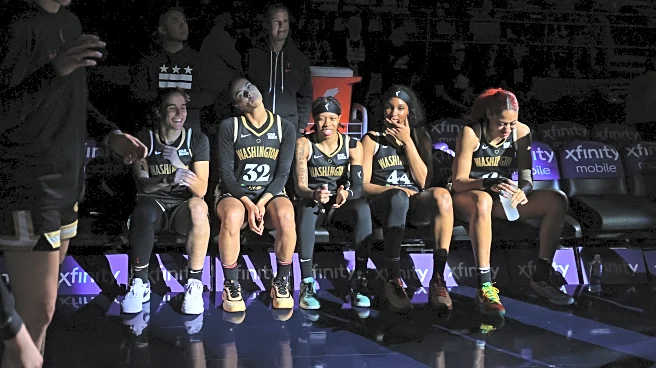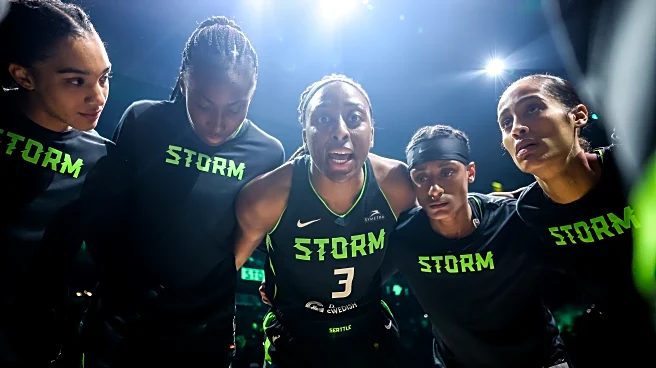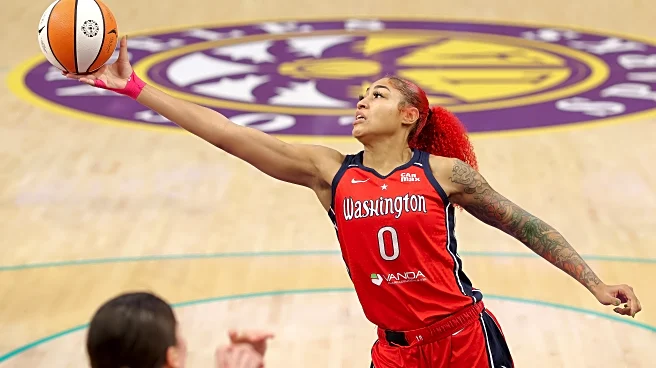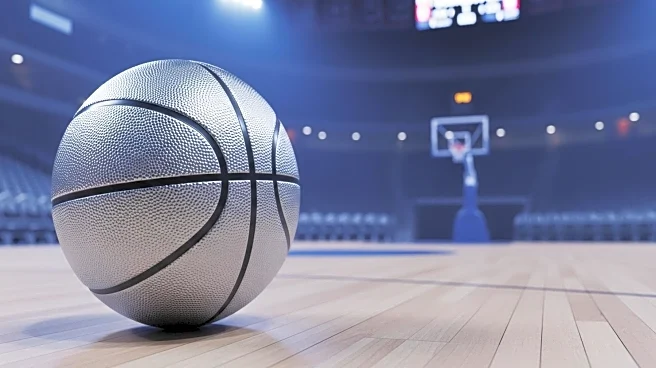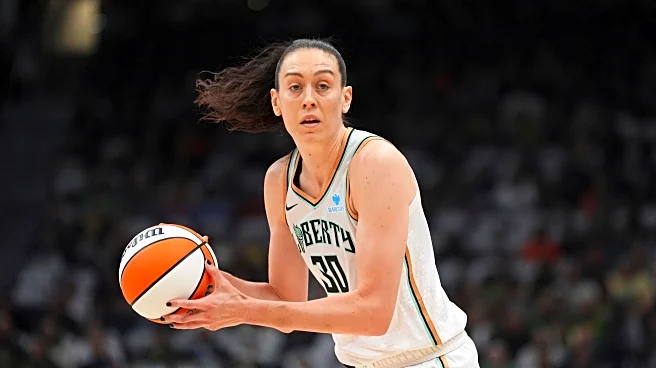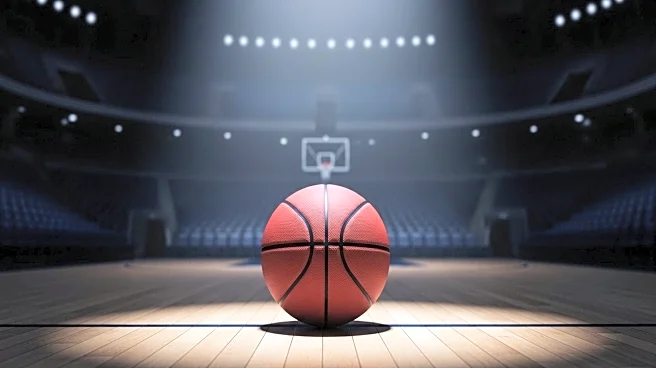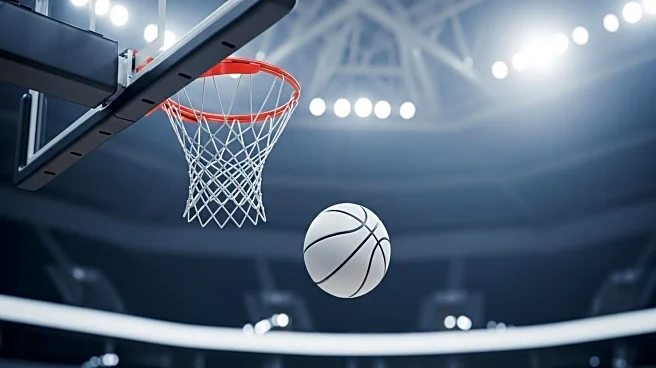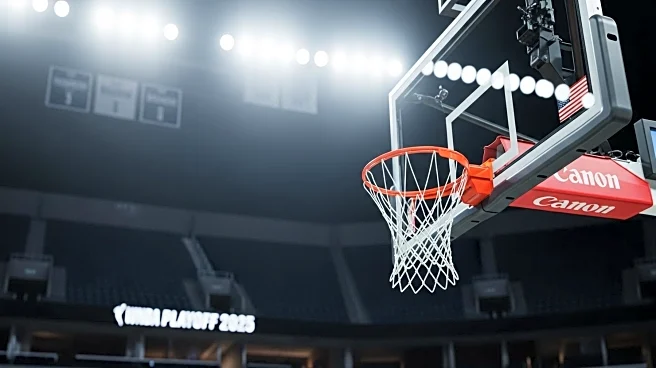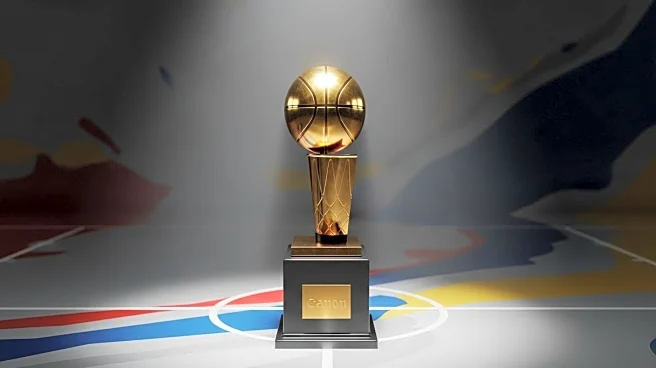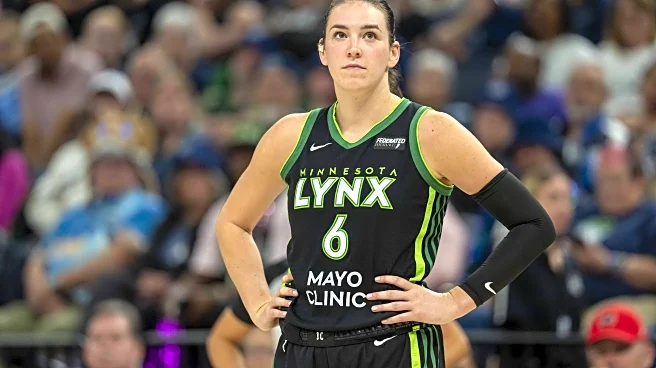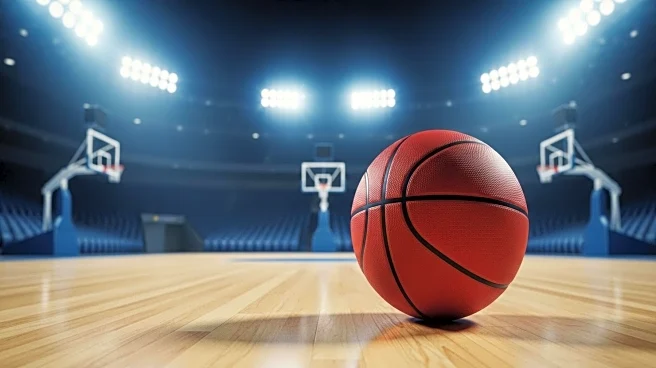
Last year, the Washington Mystics started the season on a 12-game losing streak, a sour moment that marked the beginning of the end for the former front office and coaching staff. This year, they managed reasonable playoff hopes for 34 games before dropping 10-straight to end the season.
A two-win improvement on last year’s record would usually be indicative of some failure to grow, but progress isn’t always so linear. As the curtains are drawn shut on the 2025 season, the Mystics are leaning into
future, not shying away from it. This season wasn’t about losses. It was about lessons.
Learning grace

The eternal mountain scaled by all of the league’s greatest players is one of losing. Prospects are drafted on the reputation of their dominant collegiate careers, and must quickly learn to accept losing as a recurring face in their journey. They must learn to give themselves grace. For rookies Kiki Iriafen and Sonia Citron, this was a new hurdle.
Iriafen had 20 total losses in her four-year college career. Citron had 28. Both had 28 losses this year, a heavy weight compared to their 16 wins. “It’s tough,” Iriafen said, reflecting on the initial shock of rhythmic losses. “I think it’s a shift in perspective. We’re going through these growing pains now, so that in the next two or three years we can be holding up that trophy.”
Alysha Clark, who Washington acquired from the Seattle Storm at the trade deadline, had to manage that same shift in perspective. She spent six-straight seasons failing to break .500 at the beginning of her career, before going on to win three WNBA championships as an important rotation player. Looking back on those tiresome losing seasons, she said that the most important thing she did was build habits—and she hopes that the Mystics rookies will do the same. Clark posited:
When you aren’t winning, what do your habits look like? Do you maintain your professionalism? Do you maintain your routine? Do you let the outside circumstances dictate how you show up? That’s something that I tried to impart on them. This is how you start a foundation and this is what you build off of, those building blocks. Because when you get to the highs, and you’re competing for championships, you’re going to always fall back on your habits.
Iriafen’s three-year plan for a championship is ambitious as she is. But let’s be honest, you would have called her ambitious if she said she was going to be an All-Star in her rookie season. You would have called her ambitious if she said she was going to set franchise records for offensive rebounds, and the rookie franchise record for total rebounds. You would have called her ambitious if she said she would finish fifth all-time in rookie season double-doubles. Ambition has never hurt the Southern California product.
She wasn’t the only Mystics rookie tearing through the record books either. Citron, Iriafen’s rookie ride-along, has a list of freshman accomplishments that dwarf any first-year in franchise history. Citron set league records for most points-per-game by a rookie with over 60 percent true shooting, most 3s made by a rookie shooting over 40 percent from distance, most double-digit scoring outings by a rookie and became the youngest rookie to score over 600 points in a season. Above all, she set the record for total points by any Mystic player in a season. Iriafen and Citron were the fourth duo in the history of the NBA and WNBA combined to both make the All-Star game as rookies.
After two years of searching post-Elena Delle Donne, Washington has found it’s franchise players.
Missing pieces

Over half of the Mystics roster is on expiring contracts. There’s a strange aura of uncertainty clouding the offseason, but it will afford the front office an opportunity to build back up with intention. With one season of experience under his belt, head coach Sydney Johnson can now re-assess the archetypes that worked for his offense, and perhaps what he was missing.
Johnson’s white whale is shooting. The Mystics finished last in the league in 3-point attempts, and towards the bottom in percentage. When a notable portion of your offensive production is coming from interior scorers, you need to surround them with spot-up support. Washington failed to punish teams for over-helping on their forwards, and Johnson has been transparent about desired improvements behind the arc.
In the shadow of the trade deadline, Brittney Sykes departure voided Johnson of another important archetype: a downhill guard. Sykes was one of the league’s premier slashers, and her ability to create advantages without a ball screen bailed Washington out of countless blown-up set plays. From an outside perspective, perimeter drives became a chore for the Mystics sans Sykes. Johnson agreed, saying:
The ability to get downhill, to get into the lane, to get fouled, at the guard position, without a ball screen, was a nice complement to what we were able to do so convincingly and consistently in the frontcourt. That kind of gave us a two-headed attack… and I think other teams, they benefit from [having guards who can get downhill].
Whether the Mystics rummage for an aggressive guard with one of their many draft picks, in free agency or simply through the ongoing development of current players, it’s clear that they benefit from the three-dimensional nature of that skillset. TCU’s Olivia Miles and South Carolina’s Ta’Niya Latson are names that come to mind if Washington explores the former, draft-centric route. Marquee free agents like Kelsey Mitchell and Kahleah Copper could fit the bill, but may not match Jamila Wideman’s desired timeline. Sug Sutton and Jade Melbourne, if re-signed, are ball-screen dominant creators who may be challenged to find their own isolation game. Far from answers, Washington has options.
Another glaring conundrum for the Mystics manifests through their two best forwards: Shakira Austin and Iriafen. They each boast a world-class mastery of their craft, but their talents contradict. To Johnson’s 3-point shooting manifesto, it’s hard to maintain efficient spacing while playing two non-shooting forwards in the same lineup. Iriafen, like many (really, all) post players before her, said that her offseason priority is the 3-point line. Her enthusiasm breeds encouragement, but becoming a shooter is one of the hardest things to do in basketball.
Stefanie Dolson, the Mystics’ resident veteran forward, is a rare success story for a non-shooting big that was able to expand their game outwards between their first and second professional seasons. She was a willing shooter in moments at UConn, but never a true threat until her second season in the WNBA. Reflecting on her own shooting development in context with Iriafen’s forthcoming 3-point journey, Dolson shared:
[It’s important to] have teammates and coaches that believe in you. I worked non-stop on my shot [last season]. I pushed myself outside my comfort zone to work on things that I would probably never do in a game, but they made me more comfortable to take the easy shot. For [Iriafen], it’s just going to be about pushing herself to take those uncomfortable shots.
Iriafen’s frontcourt partner Austin, who’s routinely hard on herself, made it clear that she too is far from the player that she wants to be. She said that she’ll likely be returning to Unrivaled early next year, and may also be looking to compete in an additional 5-on-5 league during the offseason. Austin’s career has been tormented by injuries, and she rarely enters a season at full charge. Her willingness to continue playing in the offseason is telling, reflective of her determination and self-improvement mindset. There will be no shortage of basketball, nor development opportunities, for the soon to be fifth-year center.
Getting it right

As is routine in the league, Johnson’s end-of-season media availability was scheduled on a day in which he was conducting his own exit interviews with players and staff. As he sat down in the CareFirst Arena media room, he mentioned a few times that he and general manager Jamila Wideman had been “trying to receive more feedback than they give out.” Culture is an overused word in the basketball world. Culture lives in ambiguity, failing to attach itself to whoever or whatever creates it. What Johnson is building in DC is community.
For four months, Mystics players have been expressing validation. After big wins, they feel appreciated. After tough losses, they feel seen. Washington ended the season on a 10-game losing streak, but emotions never felt tethered to the score of the game. Instead, they flowed with the process of building.
Johnson, who usually sails a steady ship when it comes to optimism, was outspokenly disappointed after back-to-back blowouts against the New York Liberty and Golden State Valkyries at the end of August. He wasn’t obsessed about some box-score battle, or how his players weren’t as talented as their matchups. He was let down by his players failing to meet the standards of their process. He didn’t feel like they stuck together. During Wednesday’s availability, he pointed to their season series against the Las Vegas Aces as a moment where he felt they got it right:
We went to Vegas early in the season, and we found out a lot about ourselves… it felt like we might have outplayed them, but they were able to kind of seize that game. We had to step back, and say “How can we learn?” [The Aces] came here in Virginia and we held onto those lessons, even knowing that this was a veteran team that was coming back in for revenge, and we were able to stave them off… Those games tell a story of this season, in a way.
Johnson will hope that the Aces series tells an even bigger story—one about his continued tenure as the 15th head coach of the Washington Mystics. Just as the adolescent Mystics failed to conquer the Aces when they first met in May, the Mystics failed to make a mark on the postseason in the inaugural year of this rebuild. If they hold onto those lessons, just as they did when they took down Las Vegas in July, they can push a desolate franchise back to the forefront of women’s basketball.
